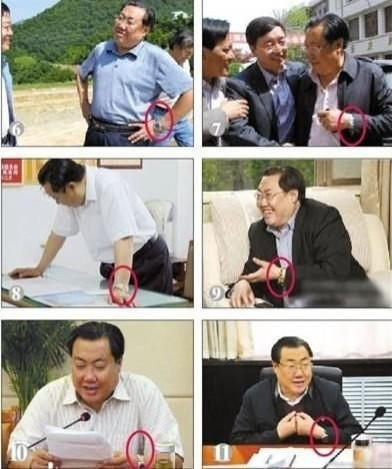Chinese Press Photographers Face Strict Guidelines For Taking Pictures Of Politicians
China’s government officials have become extra cautious about how they are being photographed by Chinese media. After the high-profile demise of Yang Dacai, the former head of Shaanxi Province’s Bureau of Work Safety, who was snapped sporting a luxury watch and dismissed, officials have become guarded about photographs.
Last year, media swarmed the scene of a tragic bus accident in Shaanxi province that killed 36 people. Among the people who visited the accident site was Yang, who was serving as the local Work Safety bureau representative. His presence was mostly a show of support and condolences for the lives lost, but the photos snapped painted a different picture.
The country’s watchdog Internet population, particularly those on popular social media platform Weibo, got a hold of the photos from the scene, in many of which Yang is pictured laughing along with other fellow officials. Many netizens said that Yang was being disrespectful or the somber situation and not appropriately expressing sympathy for the dozens of lives lost in the accident. Fueled by anger, netizens began poring over all of the photos taken of Yang available online and discovered his expensive taste for luxury watches, which cost much more than what his government salary would allow. It wasn’t long before Yang was investigated for corruption and eventually was dismissed from his post.

Now, officials have become sensitive toward photographers, being sure not to accidentally expose something that can potentially get them in trouble with the Internet. “It’s always hard to take news photos, but it’s even harder to take photos of officials,” Gao Yimiong, a press photographer for an official Party paper in southern Fujian province said, according to the Economic Observer. “You should be cautious and shoot from angles that produces a satisfying photo leaders will approve of,” a photographer for a central Jiangxi province newspaper, Li Wenbin, added. “Otherwise it may lead to a political incident.”
As a result, any pictures of politicians go through a vetting process before they are published, not only by newspaper editors but also by the local government’s public relations office. The Economic Observer was able to acquire an informal list of guidelines that press photographers for Party-affiliated newspapers should follow when shooting politicians, with some of the highlights bolded (needless to say, many of those guidelines would be anathema to media in the West, where the use of Photoshop to correct images has led to photographers being fired.)
Key Points
1. Whenever a new group of leaders take office, press photographers for local Party papers will receive a list. They’re asked to remember the leaders’ names, faces and most importantly, their ranking. Top leaders should be photographed most of the time. These photographs are a key indicator of who’s in power. If they suggest a ranking that’s incorrect, it’s all in vain.
2. The higher that officials are ranked, the more photo requirements they’re likely to have. When leaders aren’t happy, it’s common for Photoshop to be used to clean up images or clear out superfluous people.
3. Conferences, meetings and ceremonies are a great chance to enhance leaders’ images. Photographers are asked to shoot in such a way that guests don’t appear to overshadow officials. One example was in 1972 when U.S. President Richard Nixon visited China. Before the visit, Premier Zhou Enlai asked Du Xiuxian, a photographer for Xinhua News Agency, to make sure the photos indicated that Nixon was the one to anxiously initiate the handshake with Zhou.
4. Photographers are also asked to remind officials to straighten their hair, tie or suit when pictures are being taken. They should also help stage photos with flattering postures and gestures.
Taboos
Photos in the following cases are banned from public release since they’ve drawn so much negative attention.
1. Photos showing officials' belts, watches, high-end glasses and cigarettes are barred. Similarly, photos showing officials drinking liquor or burning incense cannot be released.
2. Photos that show others holding umbrellas for leaders cannot be released. However, photos showing leaders holding their own umbrellas are encouraged.
3. Photos taken from behind or above should be avoided since they diminish the leader’s stature and presence. Photos taken from a low angle looking up at the leaders are encouraged.”
© Copyright IBTimes 2024. All rights reserved.





















